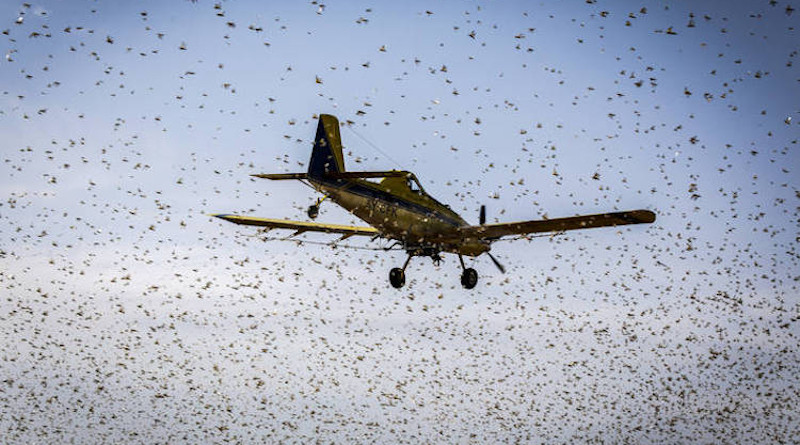Kenya Makes Risky Bet On Pesticides To Eliminate Locust Swarm – Analysis
By IDN
By Lisa Vives
Desperate East African governments are weighing their options as farmers beg for the most deadly agro-chemicals in a last ditch effort against swarms of desert locusts which have already begun to eat into thousands of acres of pasture and farmland.
“This is the best time to kill them,” said Mehari Tesfayohannes Ghebre, Information and Forecasting Officer for the Desert Locust Control Organization in East Africa. After Somalia, Ethiopia, and Kenya, swarms are now reaching Uganda, Tanzania, and southern Sudan, while billions of eggs are maturing, promising the arrival of a devastating second wave.
The pro-pesticide voices have already taken hold in three counties in Kenya – Wajir, Samburu and Marsabit – where the government has launched a large-scale spraying operation.
The Kenyan government set aside 200 million Kenyan shillings to combat the invasion, but its response was delayed for several weeks due to a lack of adequate pesticides and an insufficient number of spraying planes. This enabled the swarms to spread throughout the country. The pesticides used are numerous: fenitrothion, chlorpyrifos, fipronil, deltamethrin, diflubenzuron, teflubenzuron, triflumuron.
“With locusts, because they come in swarms of millions, we are supposed to use a ‘blanket’ of chemicals to stop them,” said Timothy Munywoki, senior agronomist with Amiran Kenya Ltd, a major horticultural agribusiness in Kenya, who advocates the use of microencapsulated pesticides to limit the spread of these toxic products.
There is, however, debate in Kenya about this solution. “These products don’t only affect locusts, they kill ‘useful’ insects, such as bees and beetles,” says Munywoki. And without bees, there is no pollination, so no fruit.
The massive use of pesticides may unbalance the ecosystem and create a vicious cycle.
“If you kill the ‘beneficial’ insects that feed on other ‘harmful’ insects, it means that you will have to continue spraying chemicals to chase them away,” warned Munywoki.
The Department of Agriculture says all the tests have been done and the products are safe for humans and animals.
Meanwhile, Somalia is planning to control the locusts with biopesticides — a fungus which produces a toxin that kills only locusts and related grasshoppers. Since the last major locust outbreak in Africa in 2003–05, researchers have been able to make the biopesticide cheaper, more effective, longer lasting in the desert, and easier to store.
“Large-scale use to control an invasion of desert locusts would be a first,” says Michel Lecoq, a retired entomologist who worked on locust control. “If successful, it will be a big step forward.”
The moment is crucial, because the next generation of locusts is now maturing and could devastate crops planted at the end of March. “We have a short window of opportunity to act,” Dominique Burgeon, director of emergencies at the Food and Agriculture Organization (FAO) of the UN said at a briefing on February 24 in New York City.

